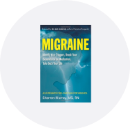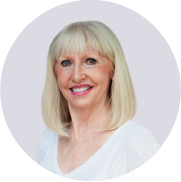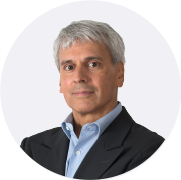Published:
Q&A with Sharron Murray and Alec Mian
By Alec Mian, PhD, CEO Curelator on December 3, 2015
We were fortunate to have Sharron Murray as one of our first N1‑Headache™ users. We were introduced to one another by Dawn Buse, PhD, one of America’s leading clinical psychologists and Director of Behavioral Medicine at the Montefiore Headache Center in New York. We were very interested to have Sharron try N1‑Headache™ because of the phenomenal success of her five year journey to track her triggers and reduce her chronic migraine attacks by 90%.
Sharron is a registered nurse by profession and the author of a respected book about migraine triggers: Migraine: Identify Your Triggers, Break Dependence on Medication, Take Back Your Life: An Integrative Self-Care Plan for Wellness.
When Sharron received her trigger and Protector Map®s, they largely confirmed the factors that she suspected were influencing her attacks.

Alec: Sharron, can you explain that a bit for us?
Sharron: Yes, the Maps (which reference Sharron as Patient 39) confirmed triggers like MSG, tyramine (additives and preservatives), humidity, eyestrain, loud noise, travel, tiredness/fatigue, sadness, anxiety, and stress.
I also liked that it showed my protective factors as happiness, sleep quality, wake refreshed, sleep duration, relaxation and 1-2 glasses white wine per day.
I also found it interesting to see some of the triggers with no association like moderate activity and bright lights. As well, some of the triggers with not sufficient data are things I avoid like spirits, intense activity, missed meals, dehydration; use sparingly like chocolate; and, tend to limit my exposure to like wind and pollen.
Individual Trigger Map® for Patient 39
Triggers are associated with increased risk of an attack.
Results of a 90 days analysis by
N1‑Headache™.

 Skin Sensitivity
Skin Sensitivity
 Odours
Odours
 Tiredness Fadigue
Tiredness Fadigue
 Humitidy
Humitidy
 Missed Migraine Medication
Missed Migraine Medication
 Monosodium Glutamate
Monosodium Glutamate
 Sadness
Sadness
 Loud Noise
Loud Noise
 Travel
Travel
 Stress
Stress
 Anxiety
Anxiety
 Bright Lights
Bright Lights
 Car
Car
 Tyramine
Tyramine
 Dehydration
Dehydration
 Pressure
Pressure
Individual Protector Map® for Patient 39
Protectors are associated with decreased risk of an attack.
Results of a 90 days analysis by
N1‑Headache™.

 Sleep Refreshed
Sleep Refreshed
 Sleep Quality
Sleep Quality
 Happiness
Happiness
 Relaxedness
Relaxedness
 Temperature
Temperature
Individual No Association Map for Patient 39
Factors not associated with risk of an attack.
Results of a 90 days analysis by N1‑Headache™.

 Activity
Activity
 Angriness
Angriness
 Chocolate
Chocolate
 Coffee
Coffee
 Eyestrain
Eyestrain
 Irritability
Irritability
 Moderate Activity
Moderate Activity
 Nitrates
Nitrates
 Onions
Onions
 Sexual Activity
Sexual Activity
 Sleep Duration
Sleep Duration
 Time Outside
Time Outside
 White Wine
White Wine
 Wind Gust Mph
Wind Gust Mph
 Wind Mph
Wind Mph
Alec: Can you describe the tracking method you first used to monitor your migraine triggers?
Sharron: To begin with, I began to keep a calendar, a big bank calendar, the kind with big squares to write in, so I could see overlapping triggers at a glance. I wrote down everything I had to eat and drink, weather, lights, noise, stressful events, sleep time, moods, travelling, appointments, visitors, etc.
Alec: Was that difficult?
Sharron: Yes! Especially, because I had to watch for a pattern (looked for associations and relationships). For example, stressful events and interruptions in sleeping and eating patterns.
Once I identified something as a trigger, I began by eliminating or avoiding, if possible, the most problematic; and initiating protective measures for others. As well as documenting triggers, I added in measures I took to abort a migraine. For example: medication, ice pack, biofeedback, exercises and meditation. I also included my acupuncture appointments as I wanted to assess if the technique worked and how long it took.
Alec: How long did it take to see any effects?
Sharron: I started in the fall of 2001. The process was gradual over about five years, with my migraines and medication use decreasing accordingly. I was amazed to find that I had prescription medication left over at the end of the month.
Alec: How do you control your condition now?
Sharron: I continue to avoid and manage my triggers. I practice daily biofeedback exercises and meditation to keep my stress levels under control; regular moderate exercise, 7-9 hours sleep, eat three healthy meals a day, stay hydrated, and have acupuncture every 6 – 8 weeks. I do take a low dose of Verapamil (90 mg) at night, which works for heart palpitations related to mitral valve prolapse as well as a preventive medication. I keep Relpax in the freezer (the last time I took one was about 4 years ago). I use Advil on occasion but more often a compound anti-inflammatory cream I can rub on the nape of my neck at the onset of a migraine.
Alec: Can you explain how you use N1‑Headache™, including some of your early results?
Sharron: N1‑Headache™ is easy and fun to use. It takes the guesswork out of triggers. I punch in my data and it is analyzed for me. it makes me think about my lifestyle habits, as well as daily stress levels. It also lets me know what my protective factors are so I can reinforce positive behaviors.
It motivates me to try and predict and preempt attacks (a game). In addition, I like that, by analyzing my data, it tells me whether I had a headache or a migraine. An asset for ensuring the right treatment is initiated. I also have found there are certain things like chocolate, which I denied myself, I can have in small amounts in the absence of other triggers. Wish I’d had it years ago.
Alec: Can you talk a little about what you would like to see N1‑Headache™ do in the future?
Sharron: I like the fact that N1‑Headache™ tracks medications taken and missed. I wish I’d had the app when I had Medication Overuse Headaches; perhaps I would have been able to avoid them. I would like to see a place for non-pharmacological therapies, such as exercise, biofeedback, cognitive behavioral therapy, and relaxation therapies like meditation. The data collected could provide valuable input as to those that work versus not.
Go back to articles





